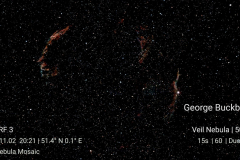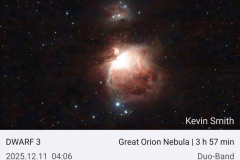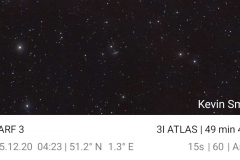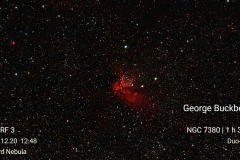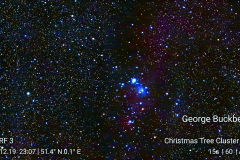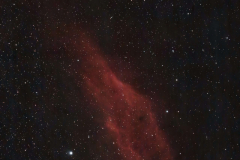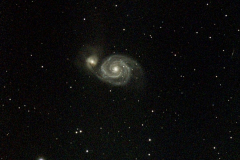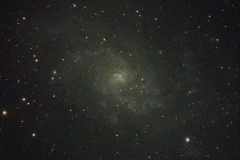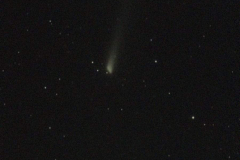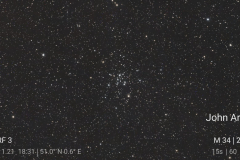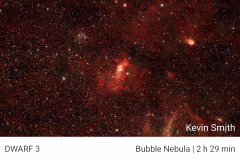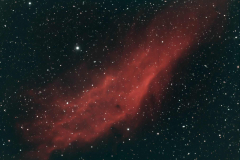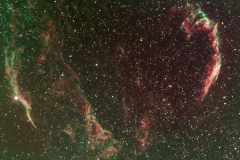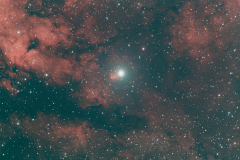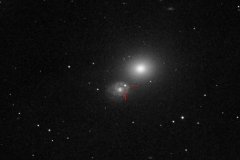So you have observed the Messier and Caldwell objects and want to know what other wonders are out there, the Herschel 400 would be a good start, but if you are after inspiration why not look at what others are observing by having a browse below.
The Horsehead and Flame Nebula
Below are 2 images of the Horsehead Nebula and Flame Nebula taken by member George Buckberry. The 1st on the 31st Dec 2025 having only 17mins and 45 seconds of total exposure and the 2nd on the 1st Jan 2026 having 1 hour and 15mins total exposure; both taken using a Dwarf3 smart scope. The Horsehead Nebula is located in the centre of the images and the Flame nebula is located at the top middle of the images.
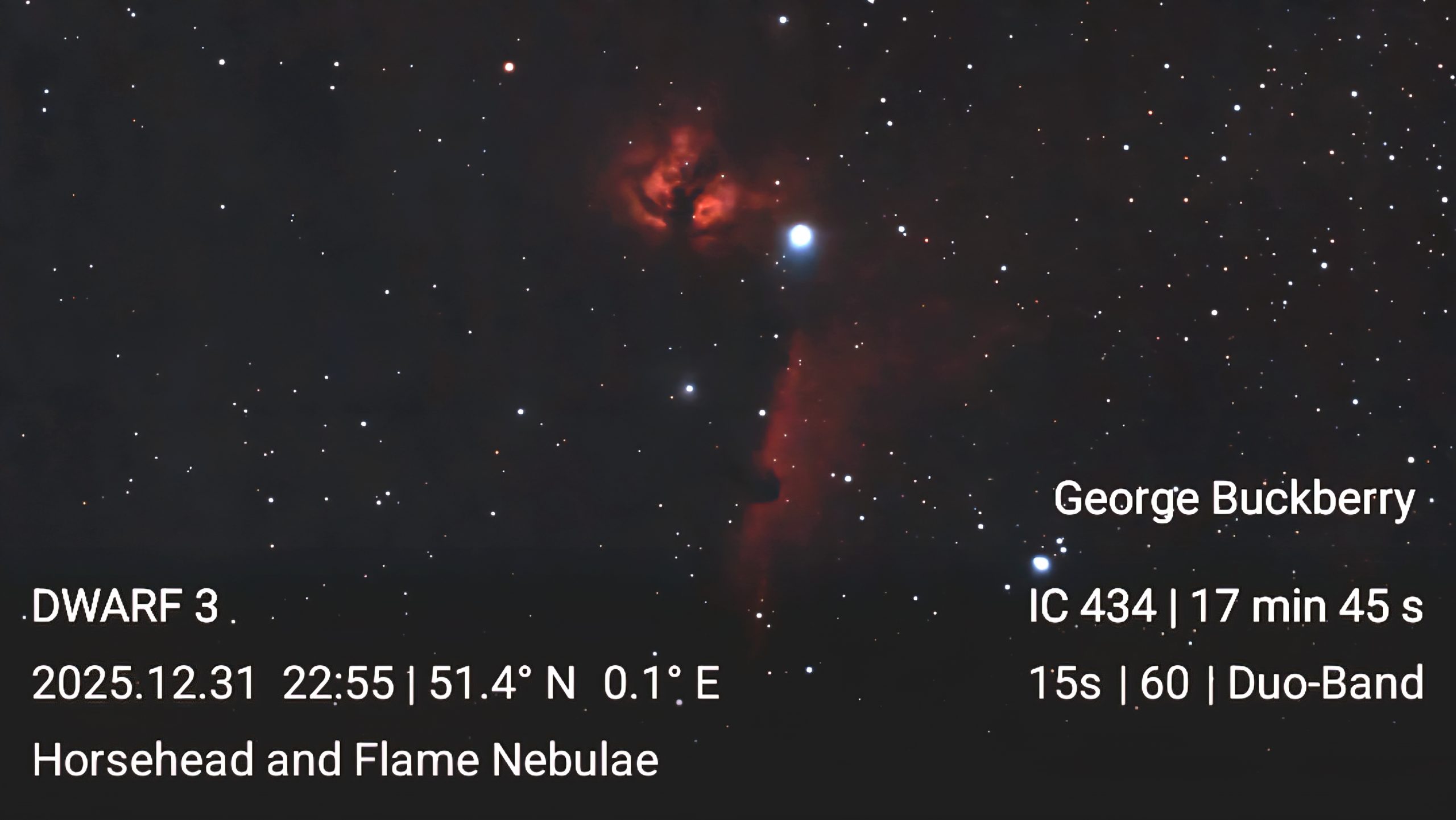
The Horsehead Nebula, also known as Barnard 33, and its companion, the Flame Nebula, sit near the star Alnitak in Orion’s Belt.
The Horsehead Nebula is a small dark nebula located about 1,375 light-years from Earth and is located just south of Alnitak, the easternmost star of Orion’s Belt and is part of the much larger Orion molecular cloud complex within the Orion B cloud. It is one of the most identifiable nebulae because of its resemblance to a horse’s head.

The Flame Nebula, designated as NGC 2024 and Sh2-277, is an emission nebula also in the constellation Orion. It is about 1350 light-years away. The Flame Nebula also lies within the Orion B cloud of the larger Orion Molecular Cloud Complex.
The bright star Alnitak the easternmost star in Orion’s Belt, appears very close to the Flame Nebula in the sky. But the star and nebula are not physically associated with one another. Alnitak lies 1260 light-years from Earth.
The Orion Nebula
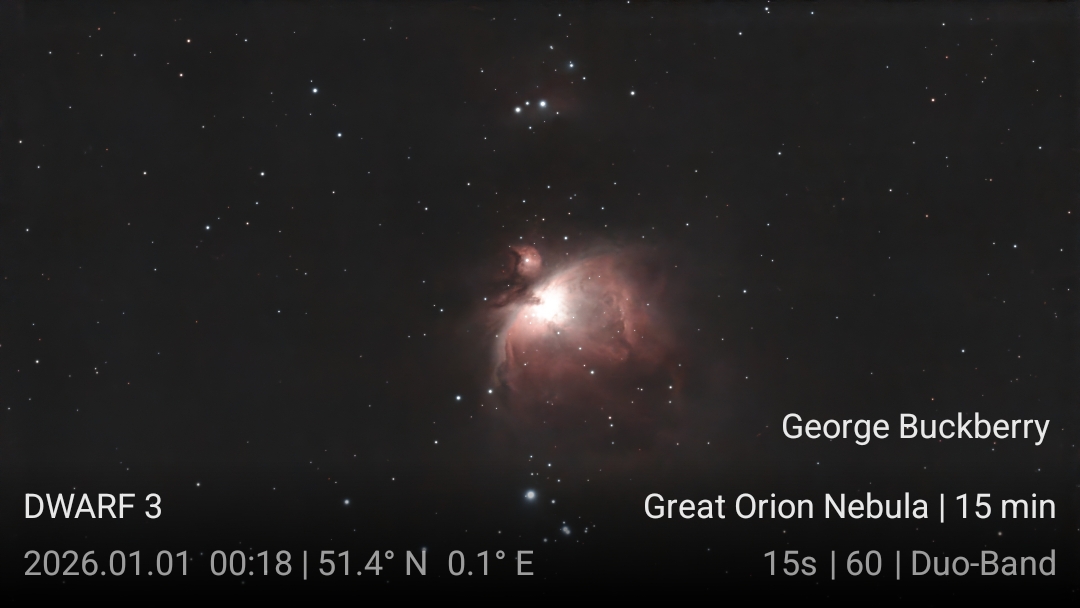
The Orion Nebula taken by George Buckberry on the 1st Jan 2026 using a Dwarf3 smart scope. This is a brilliant image as it was acquired just after a total of 15 mins of exposure. Just shows what smart scopes can do!
”The Orion Nebula (also known as Messier 42, M42, or NGC 1976) is a diffuse nebula situated south of Orion’s belt in the constellation of Orion. It is one of the brightest nebulae and is visible to the naked eye in the night sky with an apparent magnitude of 4.0. It is 1,344 ± 20 light-years (412.1 ± 6.1 pc) away and is the closest region of massive star formation to Earth. M42 is estimated to be 25 light-years across (so its apparent size from Earth is approximately 1 degree). It has a mass of about 2,000 times that of the Sun. Older texts frequently refer to the Orion Nebula as the Great Nebula in Orion or the Great Orion Nebula.” Ref:https://en.wikipedia.org/wiki/Orion_Nebula
The Rosette Nebula
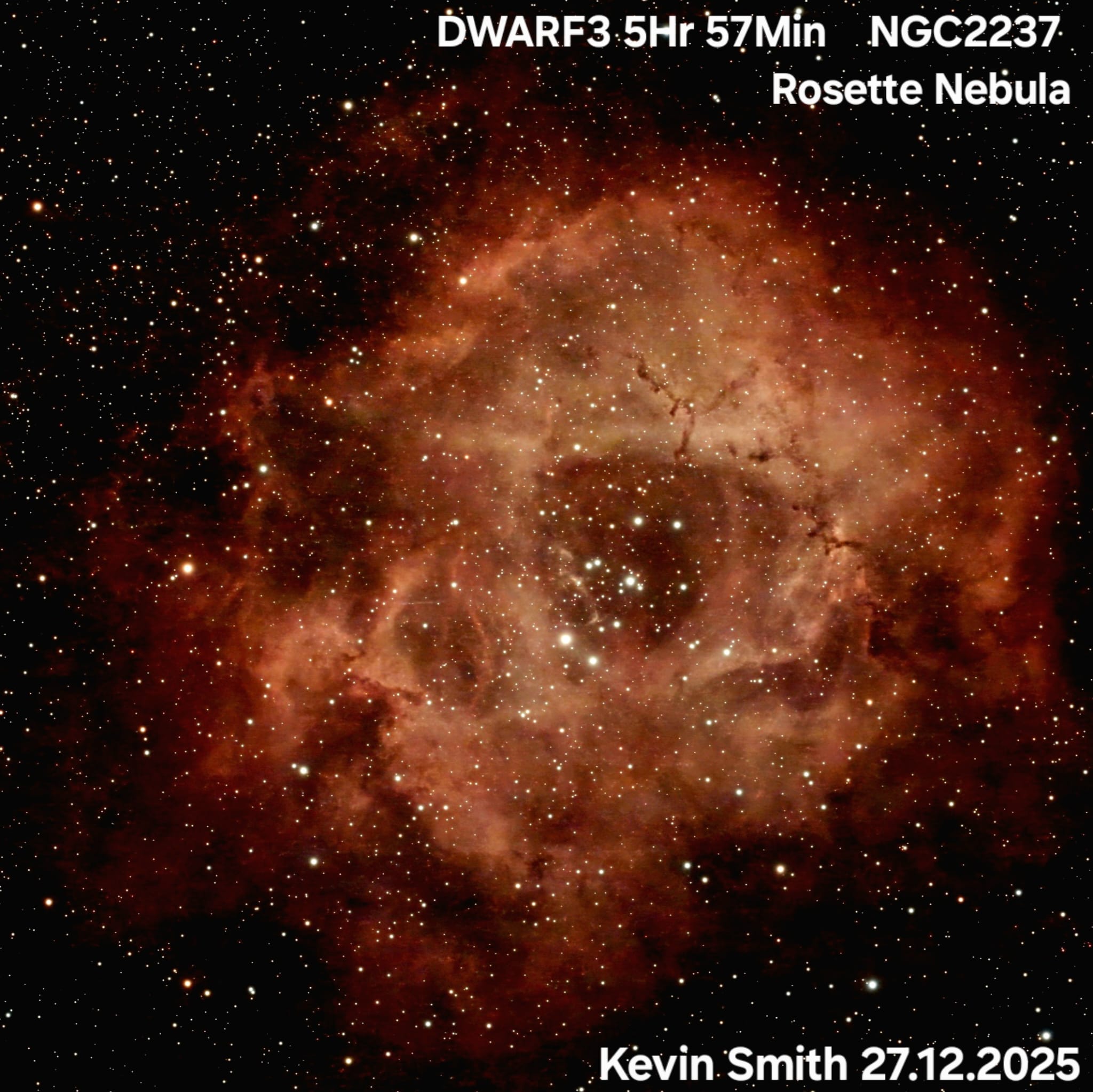
A stunning image of the Rosette Nebula taken by Kevin Smith on the 27th Dec 2025 using a Dwarf3 smartscope. The image is a total of 5 hours and 57 mins of exposure.
The Rosette Nebula (also known as Caldwell 49) is a huge star-forming region spanning 100 lightyears across and located 5,000 lightyears away.
It can be seen in the Monoceros constellation in the winter months and is located between stars Betelgeuse in Orion and Procyon in Canis Minor. Draw a line between Betelgeuse and Procyon, look just south of that line, about halfway along, and you will find it.
Deep Sky images by George Buckberry
A super selection of deep sky images taken by George Buckerry on the 4th and 31st Dec 2025 using a Dwarf3 smart scope.
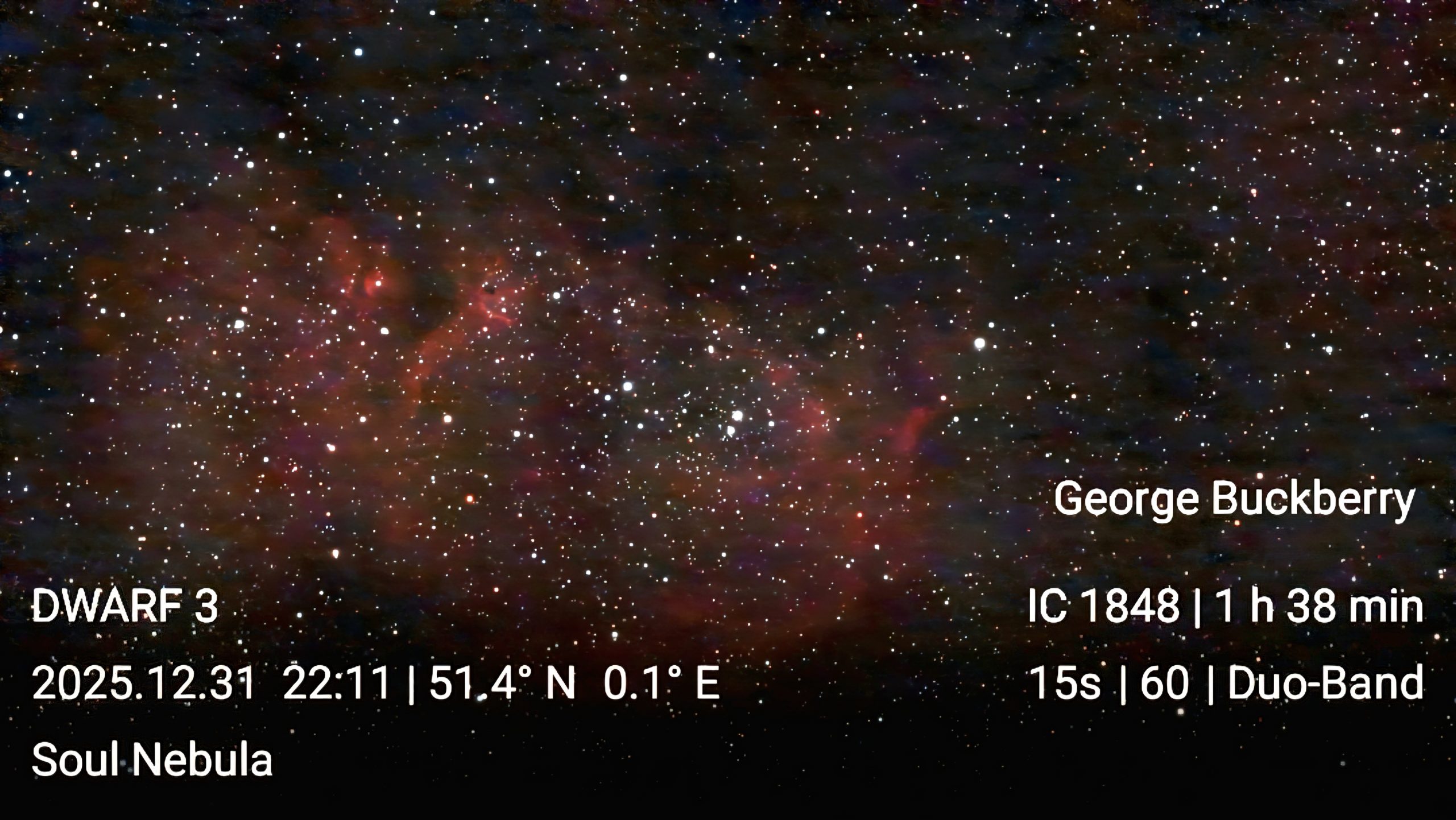
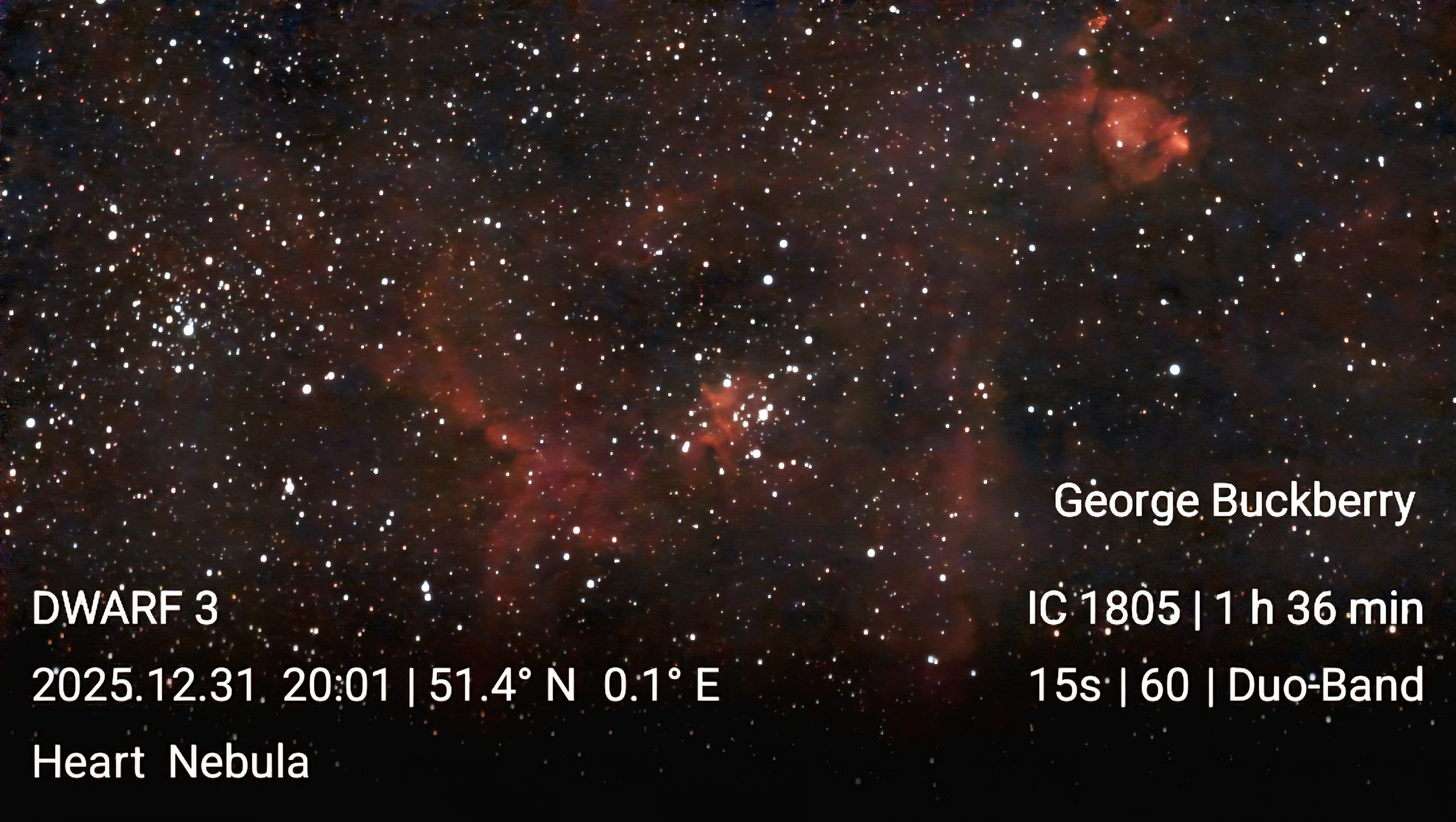
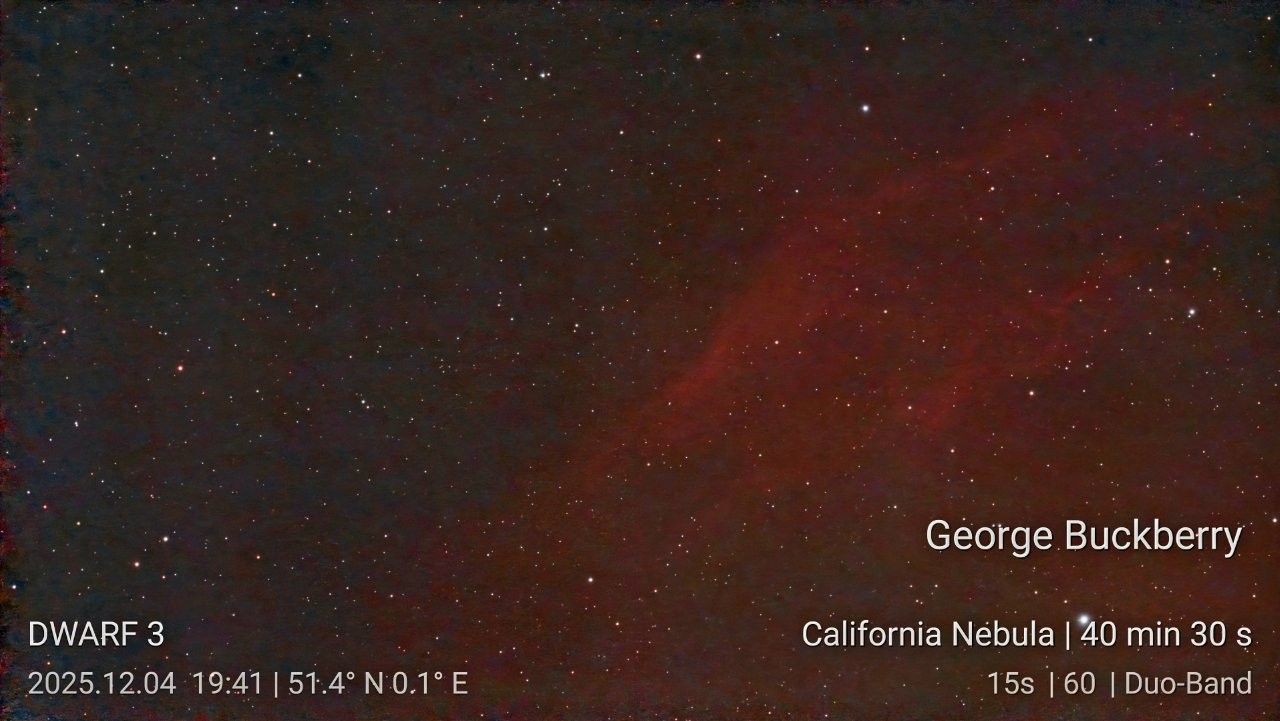

Jim Burchell’s images – 18th Nov to the 26th Nov 2025
A super collection of images taken by member Jim Burchell from the 18th to the 26th Nov 2025.
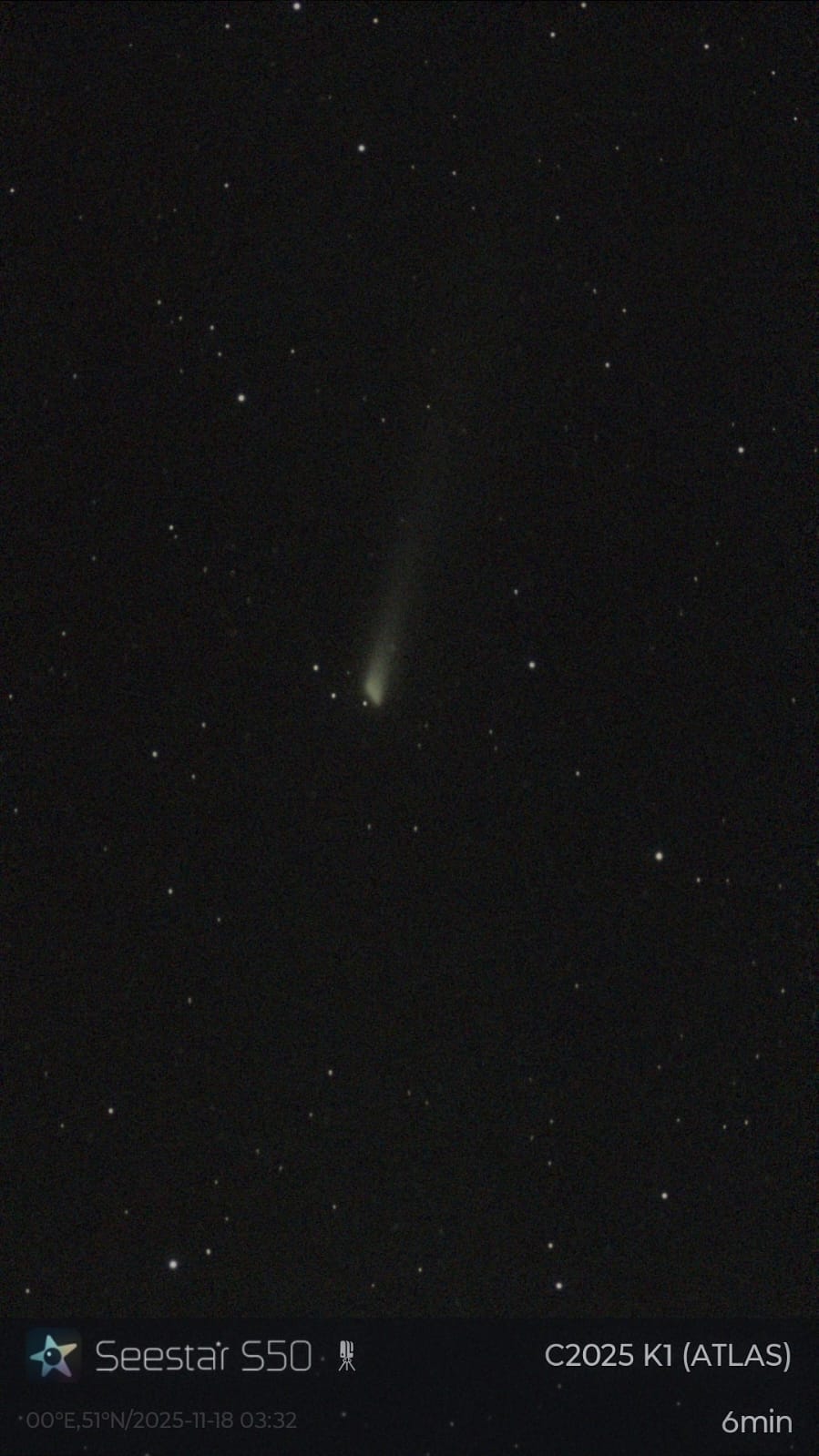
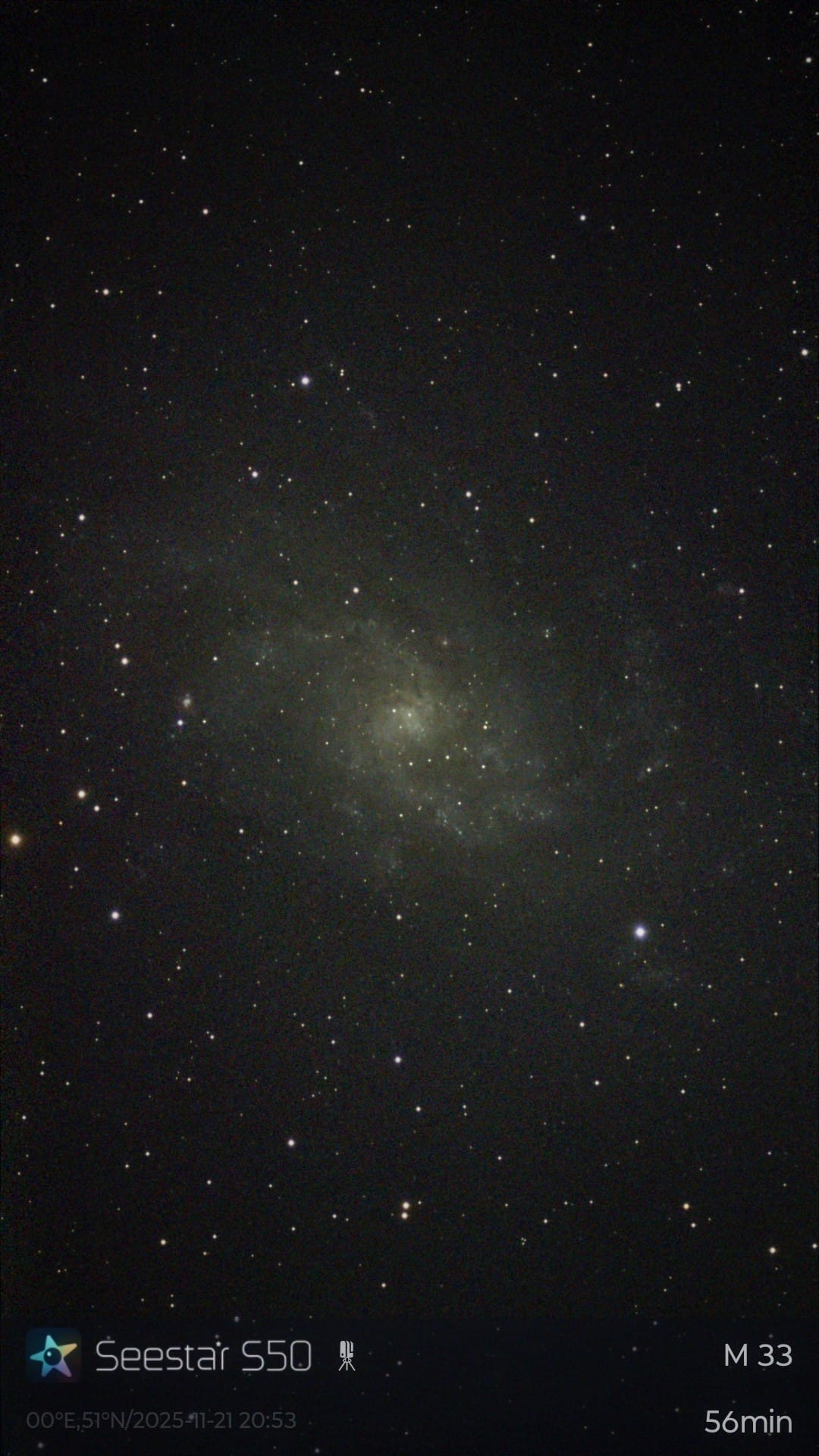
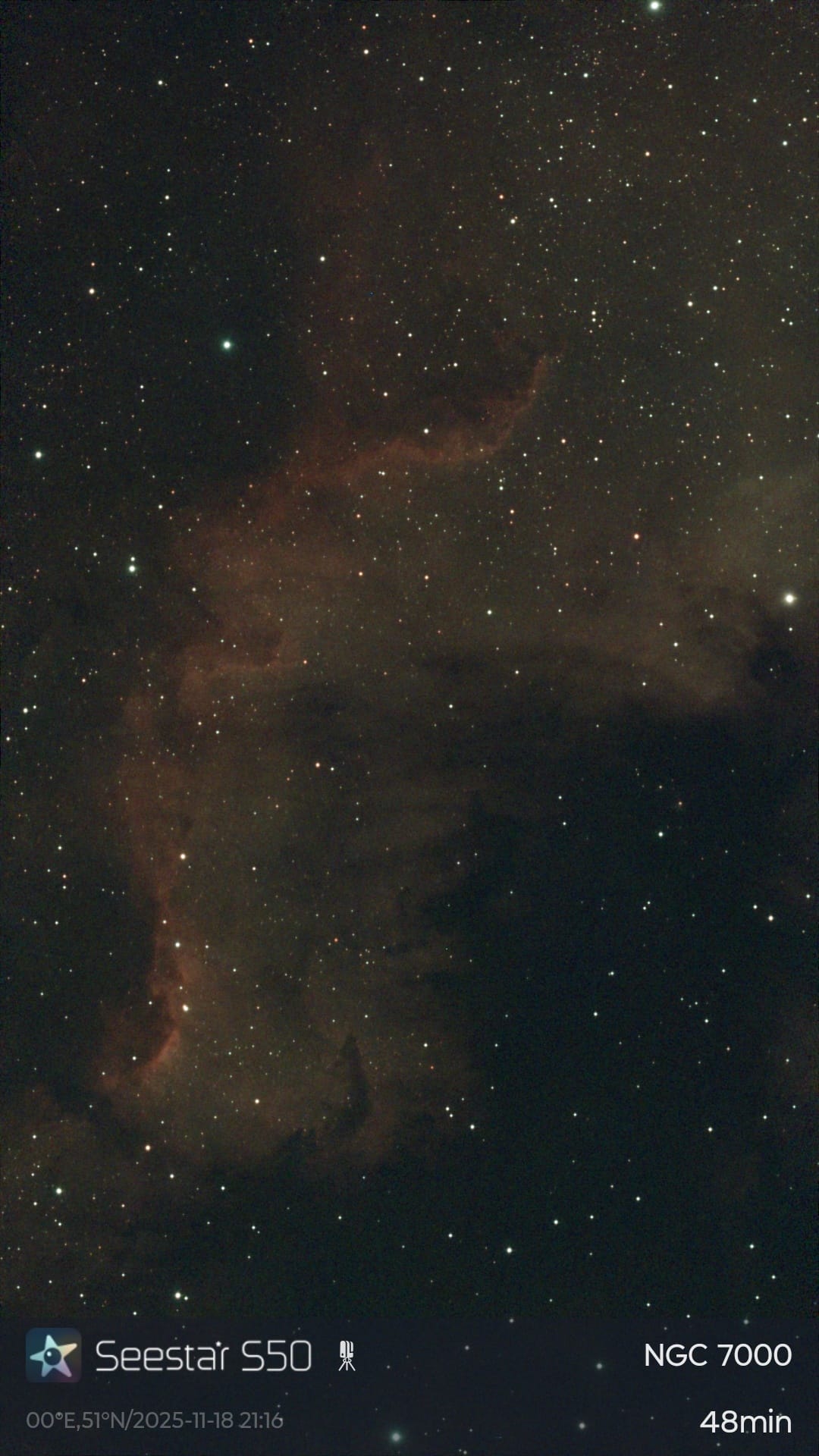

John Archer’s images – 21st Nov to the 28th Nov 2025
A superb collection of images taken by member John Archer from the 21st to the 28th Nov 2025 using a Dwarf3 smartscope.
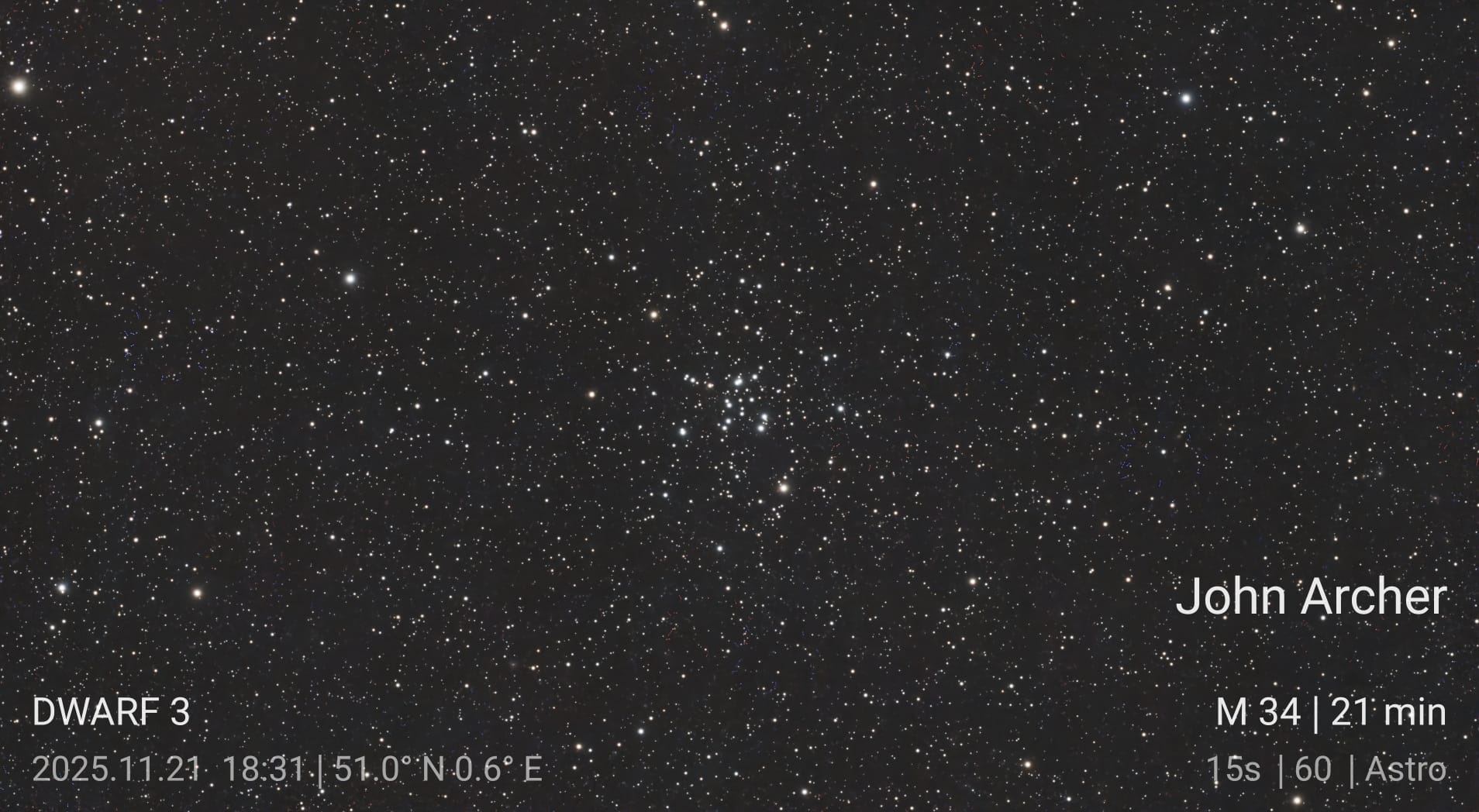
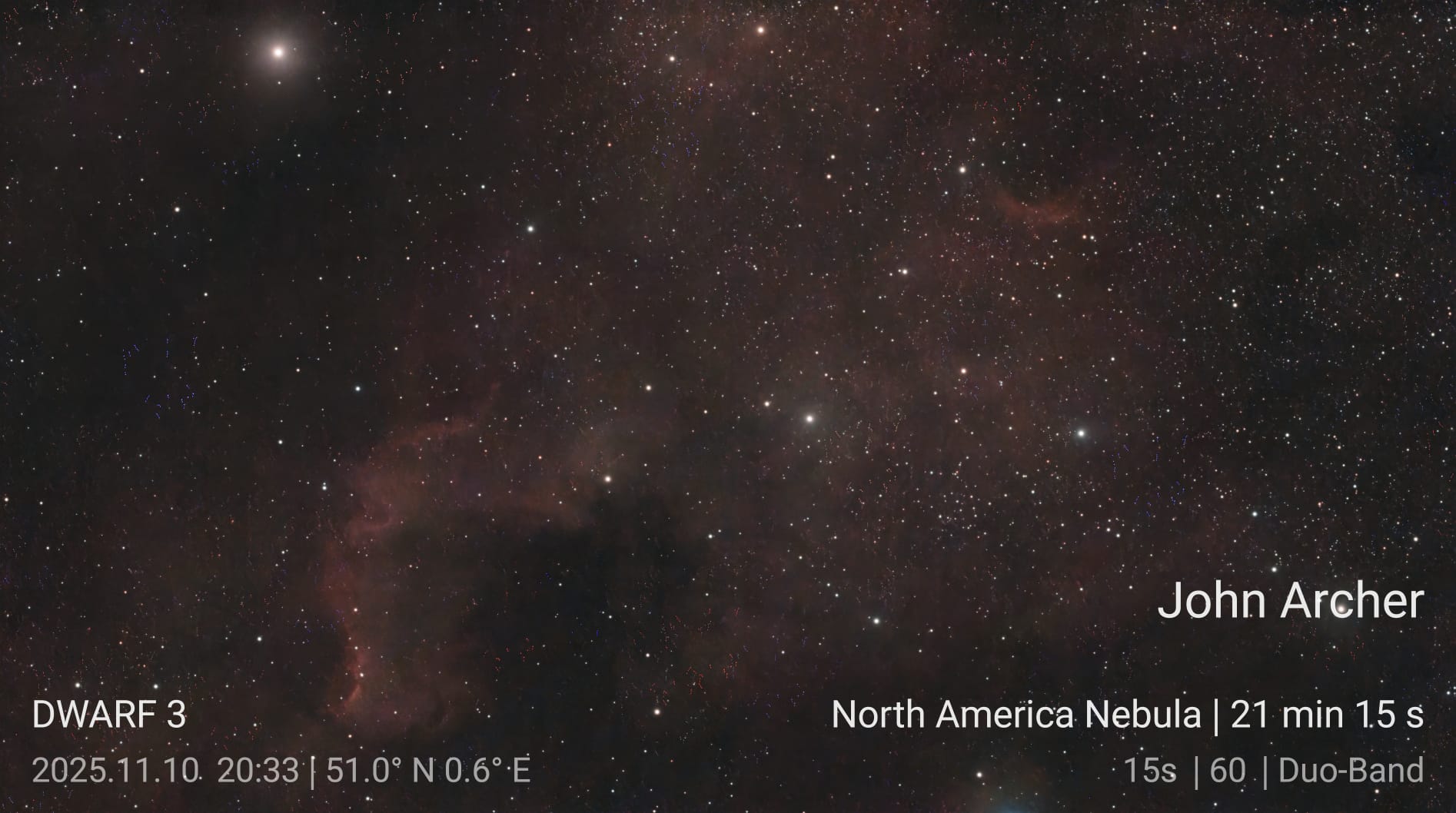
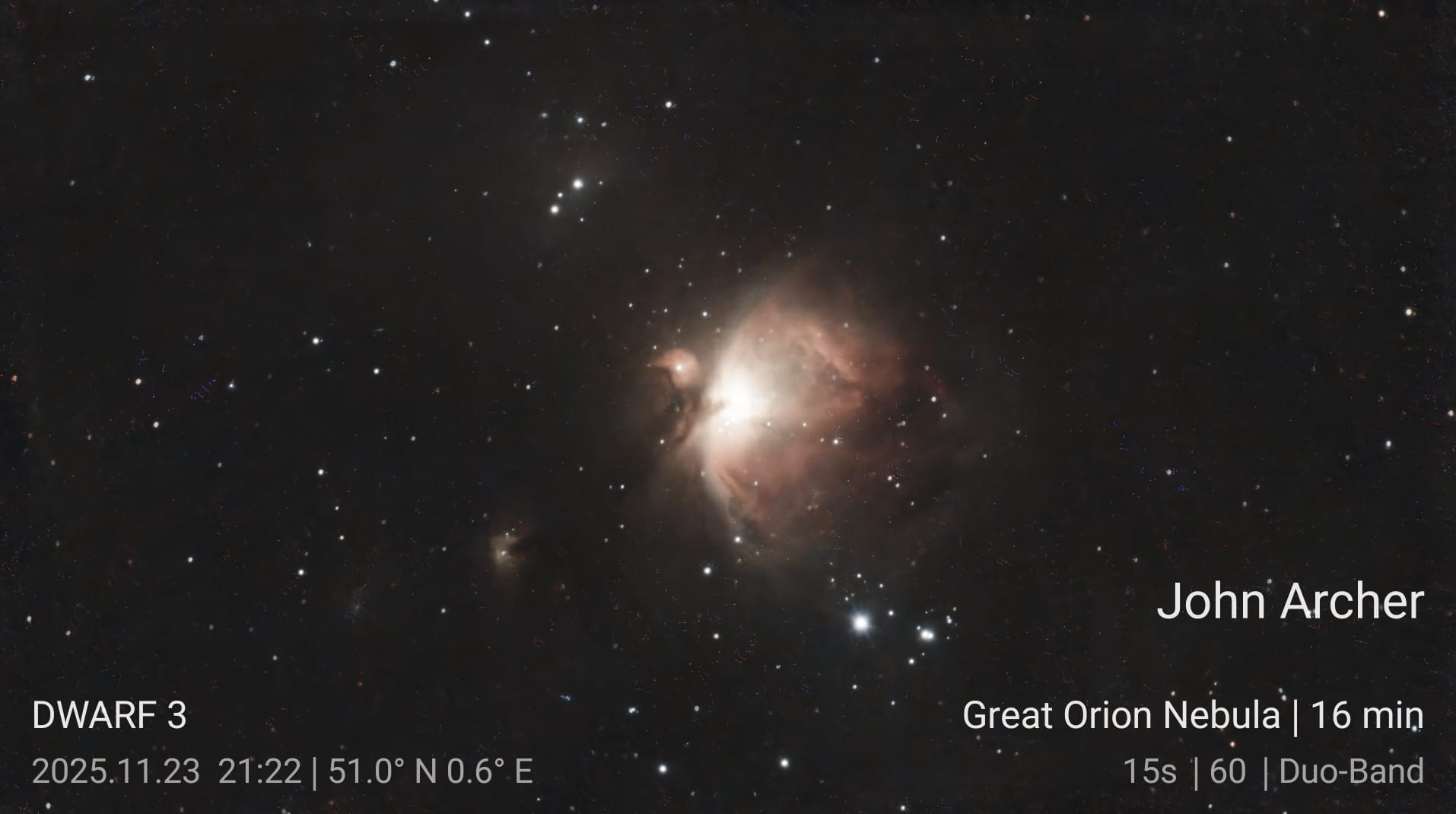

The Moon on the 28th Nov 2025
Latest images 11th to 20th December 2025
A fabulous selection of images taken by members Kevin Smith, Dan Stevens and George Buckberry from the 11th to the 20th December 2025.
Kevin Smith using a Dwarf 3 smartscope

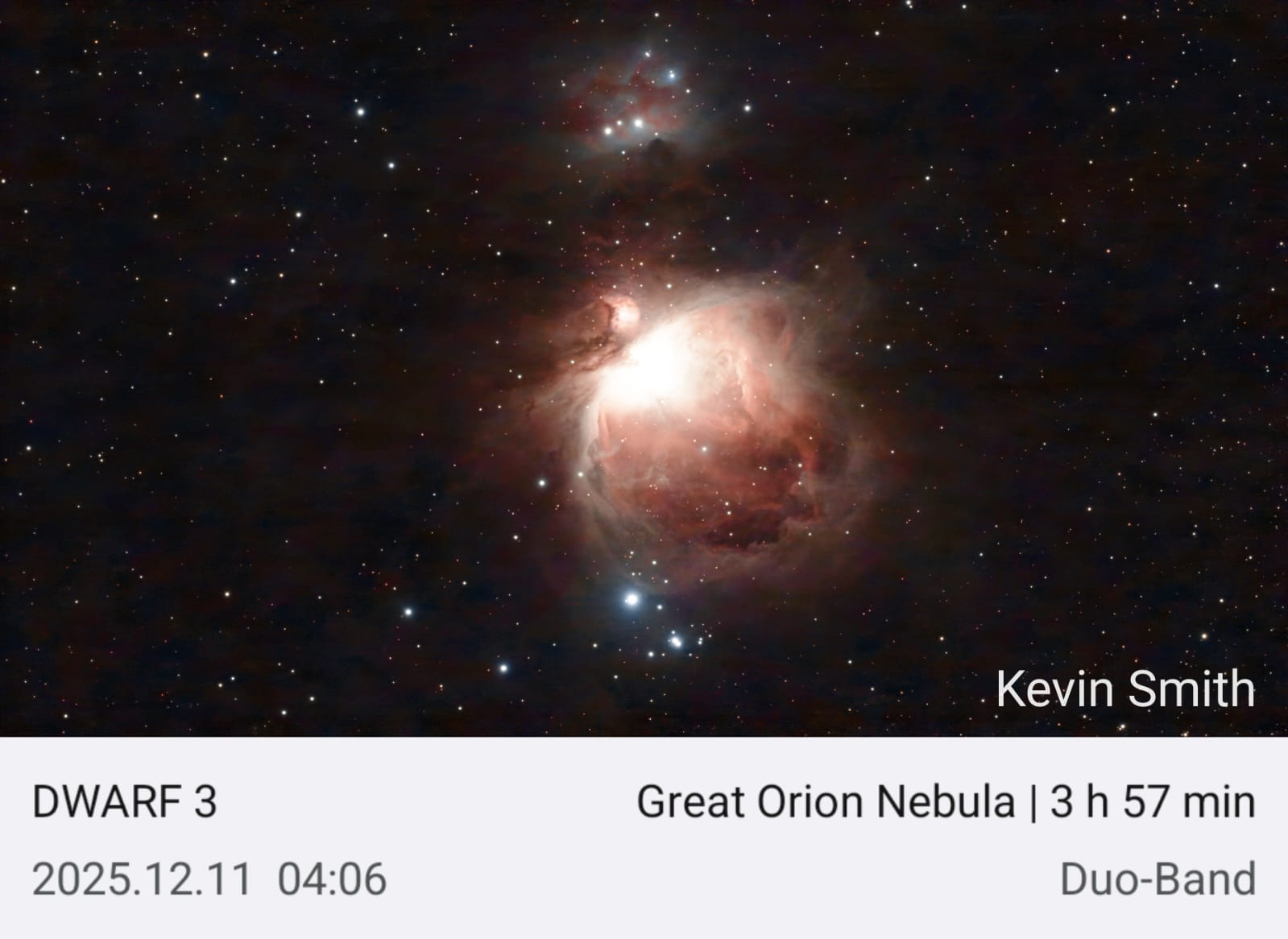


The Horsehead Nebula. A total of 4 hours 15mins exposure time.
Dan Stevens using a Seestar smart scope
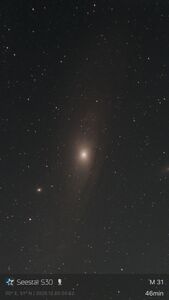
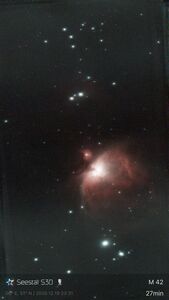
George Buckberry using a Dwarf3 smartscope
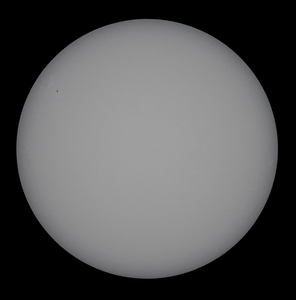
 T
T
The Sun with a single sunspot……..
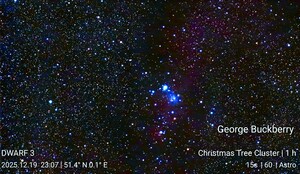
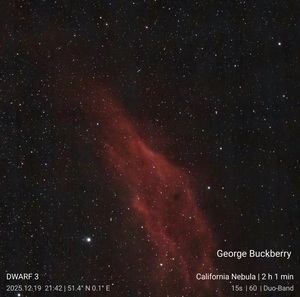
17th/18th November 2025 images by George Buckberry
The latest images from member George Buckberry. Taken using a Dwarf3 smart scope.
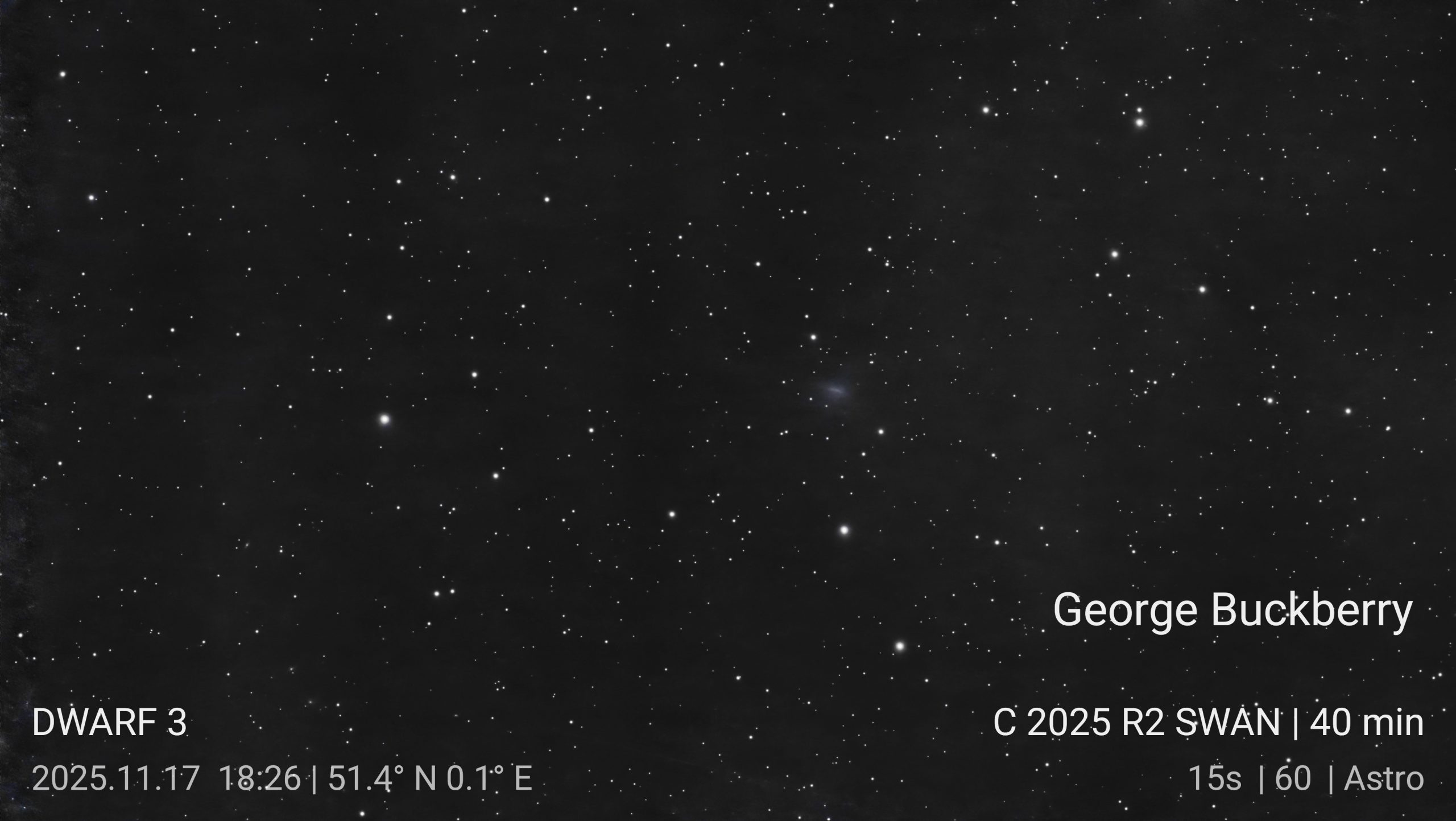
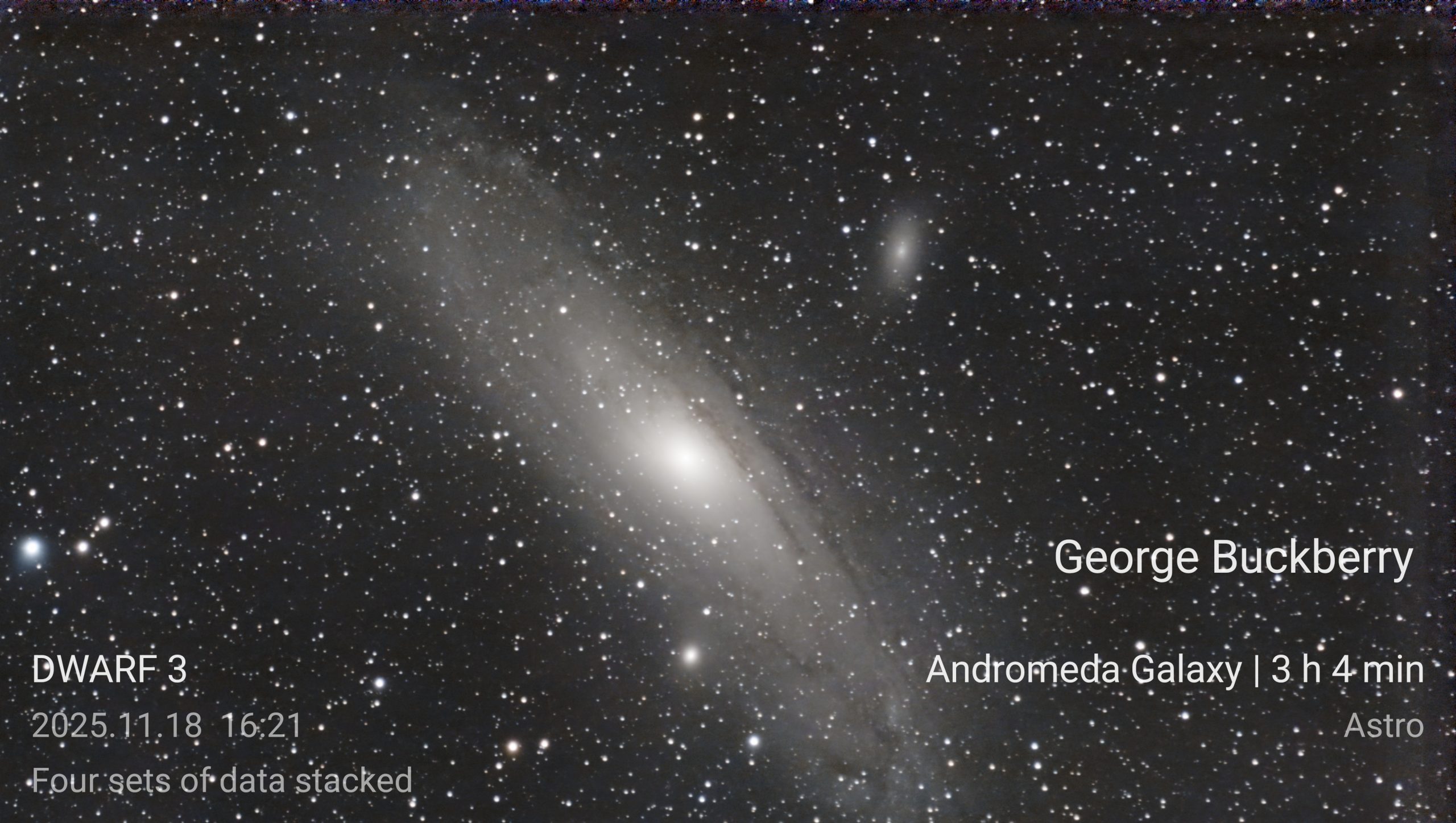
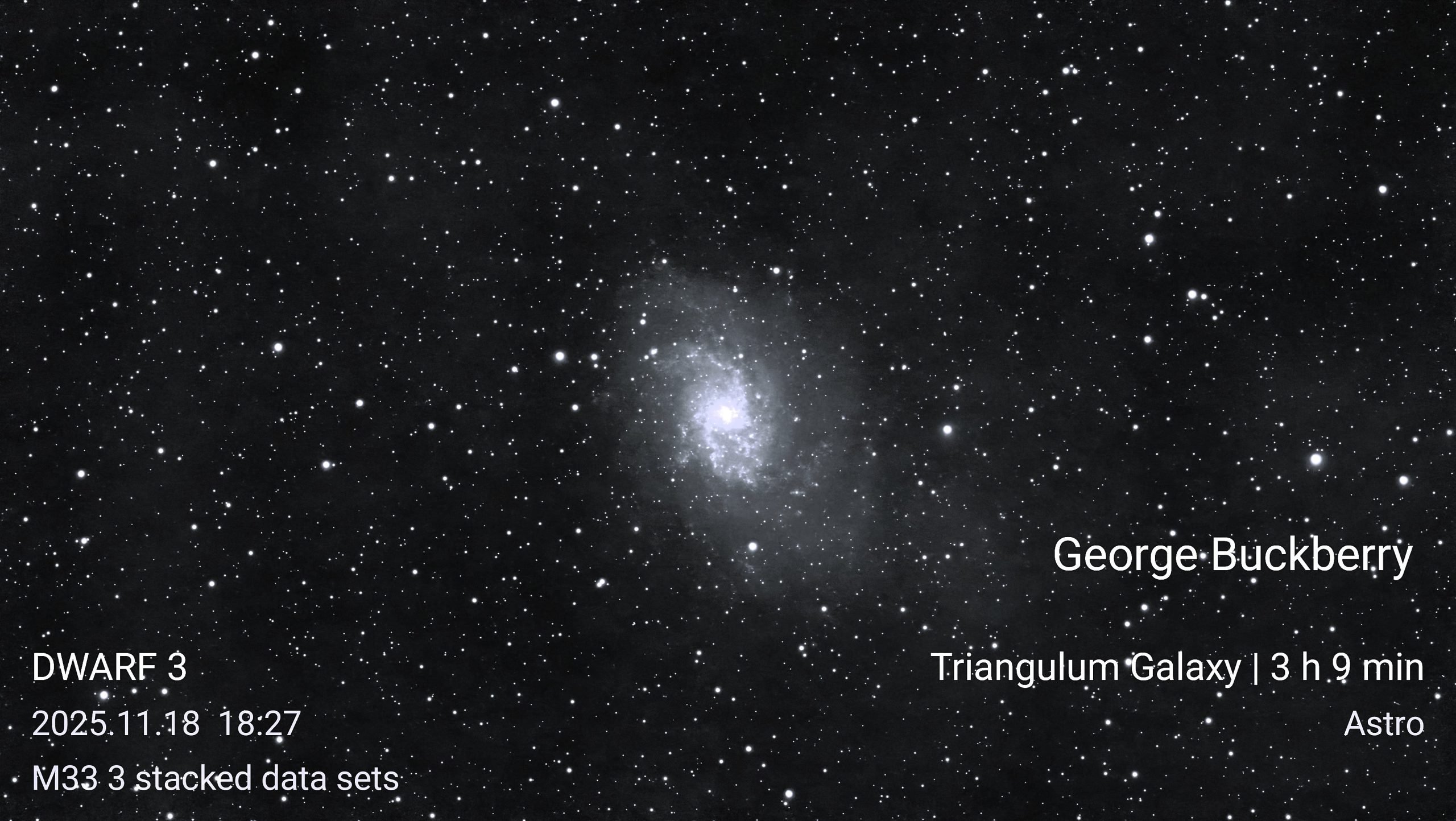
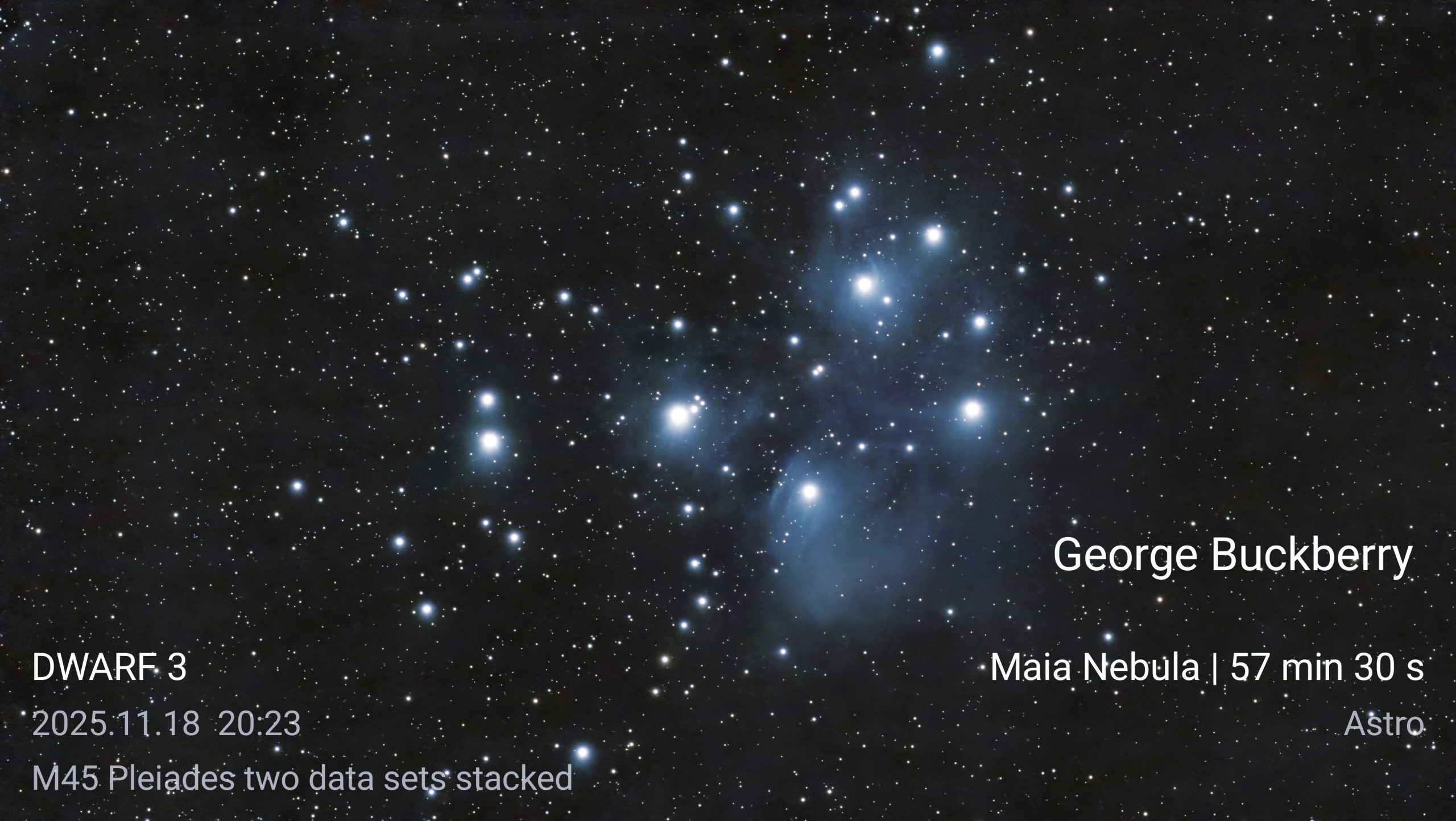
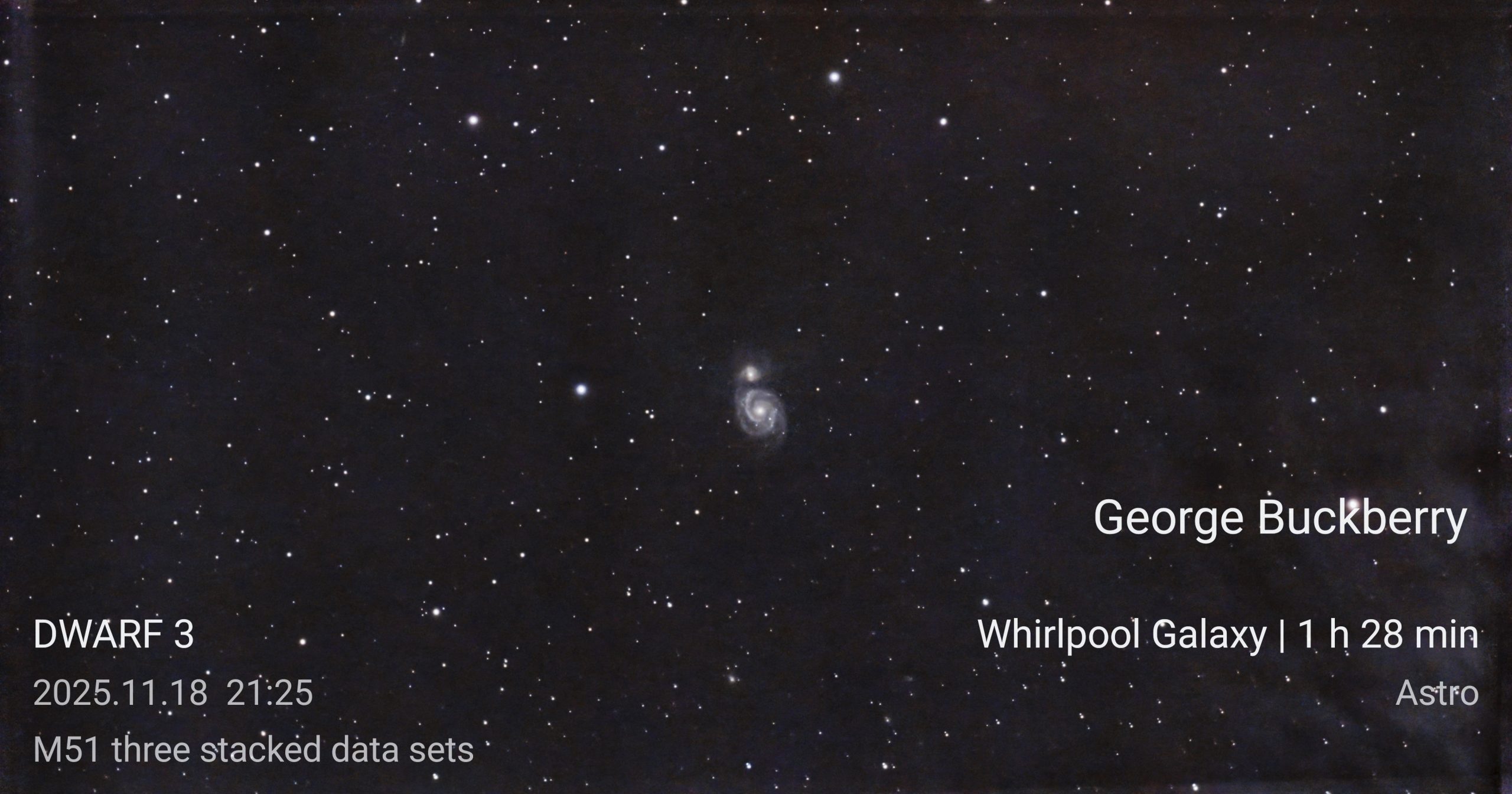
Dwarf3 images by Dr. Mike Rushton
Two super images taken by Dr. Mike Rushton using his Dwarf3 smart scope on the 12th November 2025 of the North America Nebula (Caldwell 20) and the Sun.
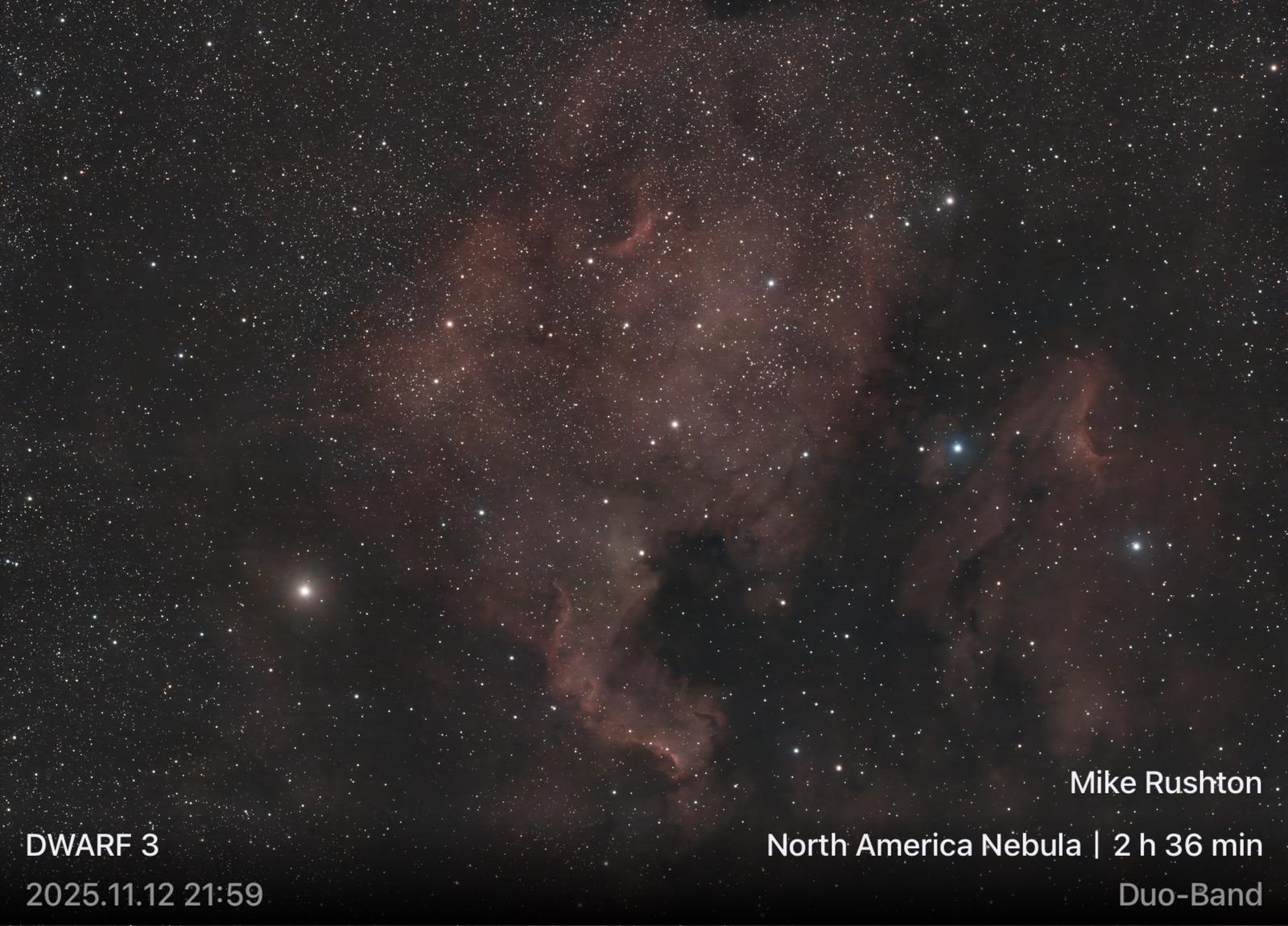

George Buckberry’s Dwarf3 images from the 8th and 9th November 2025
A super collection of images taken by member George Buckberry on the 8th and 9th November 2025 using his Dwarf3 smart scope.

The Moon: 16 subs at 1/400th S exposure, Gain=0 and a Vis filter.
Details of how George took the rest of his images with the Dwarf3 are on written the photos.
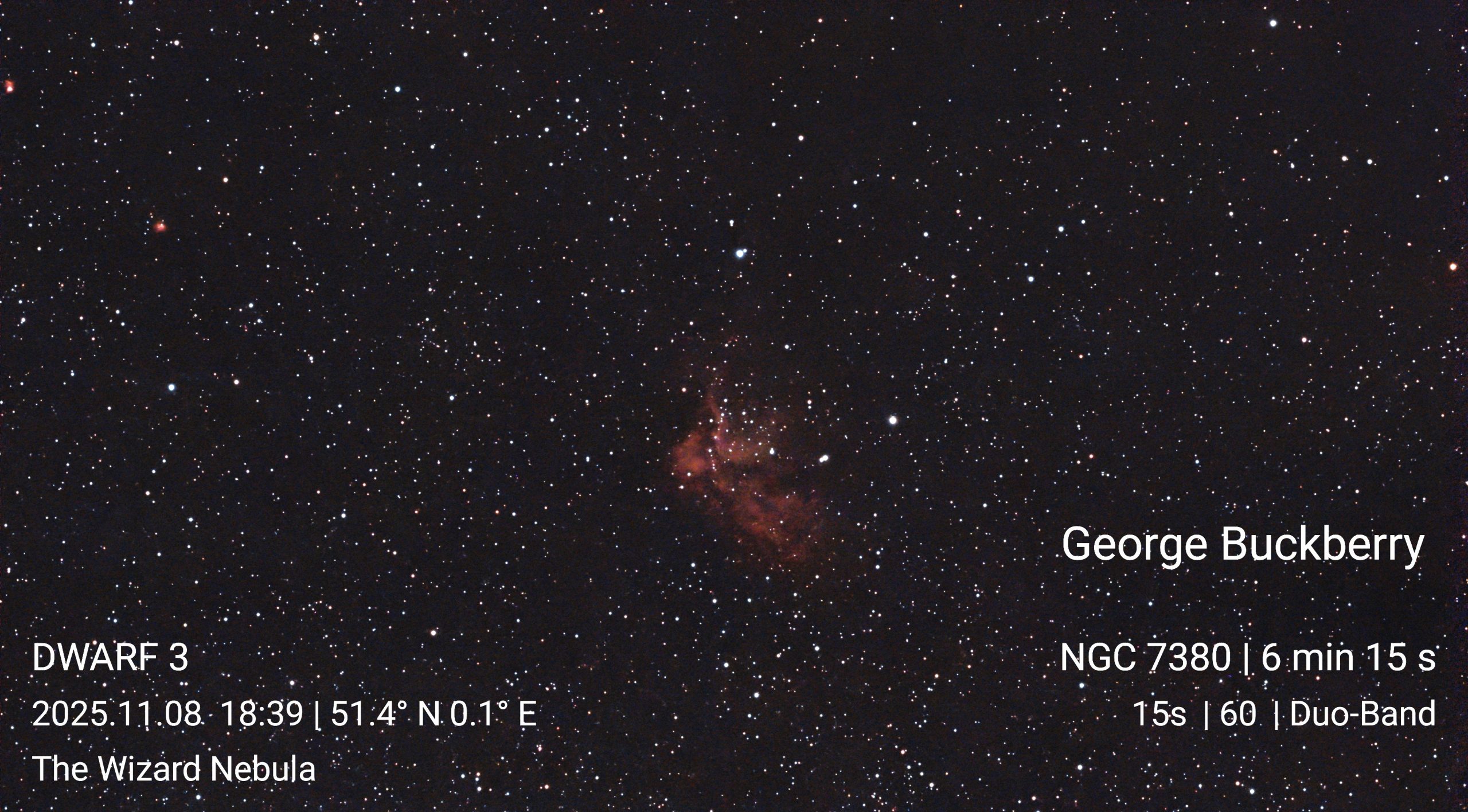
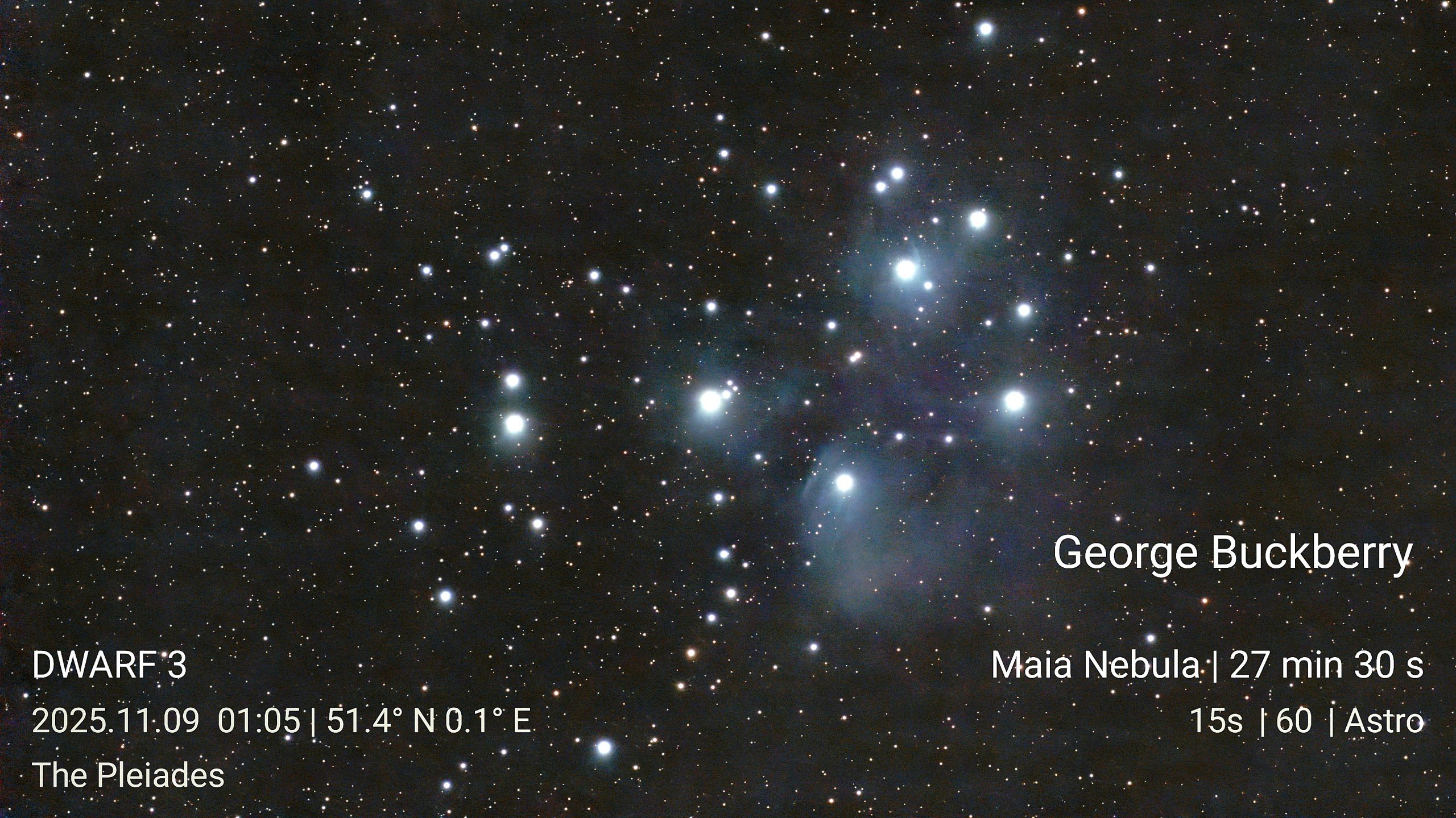
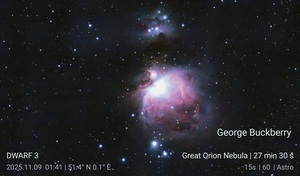



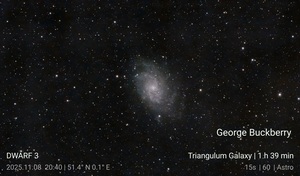
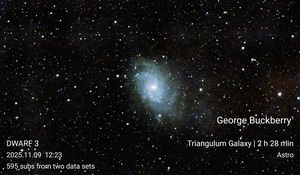
Other Images
Sun | Comets | Mercury | Venus | Atmospheric Optics | Meteors | Auroa and NLC | Moon | Minor Planets | Mars | Jupiter | Saturn | Uranus | Neptune | Messier | Caldwell | All Deep Sky | Conjunctions | Transits | Solar Eclipse | Lunar Eclipse | Wide Field |ISS & Space Junk | Exo-Planets
All images are copyright. Permission must be sought to from the image owner to the use of any of these images.

